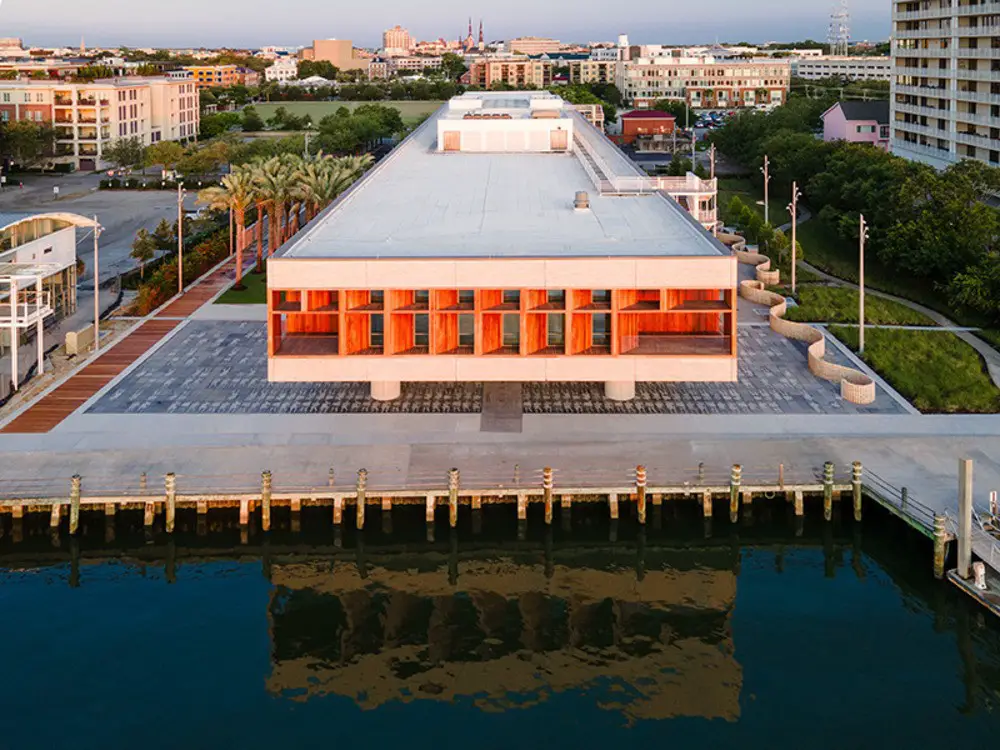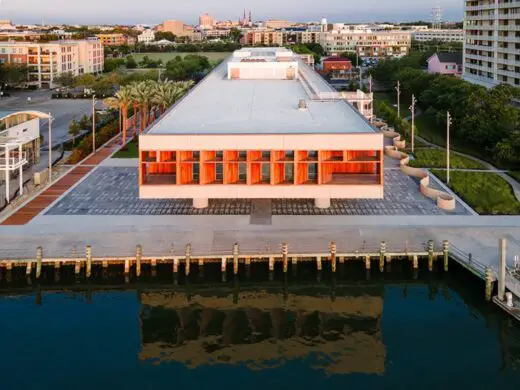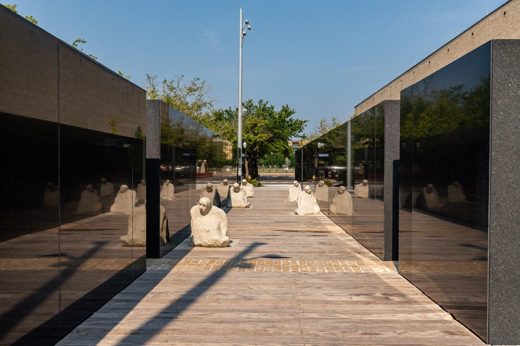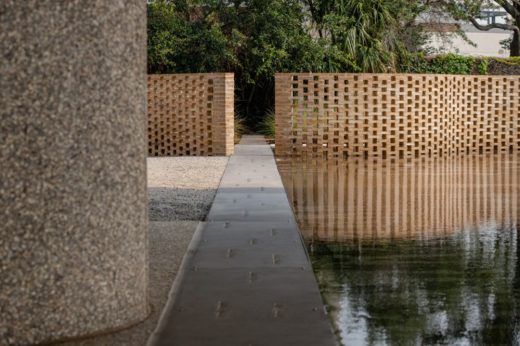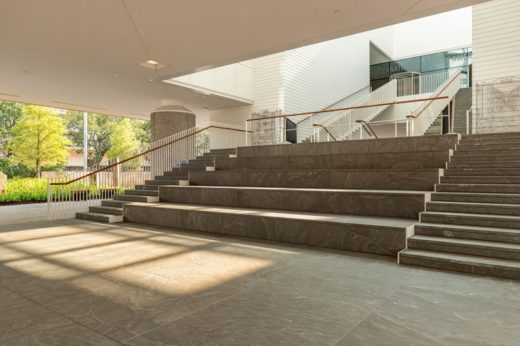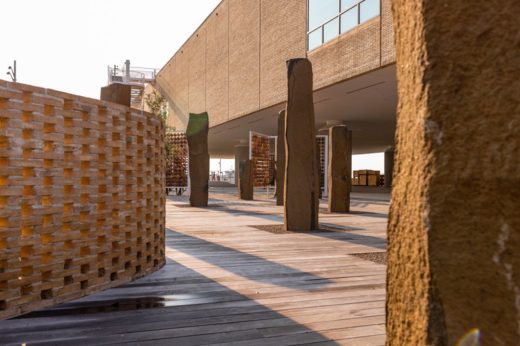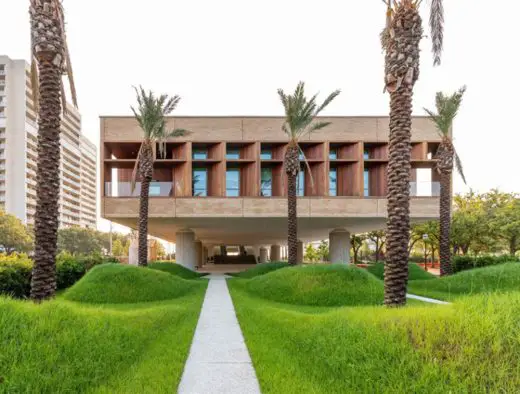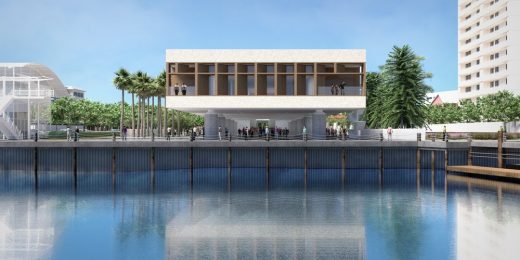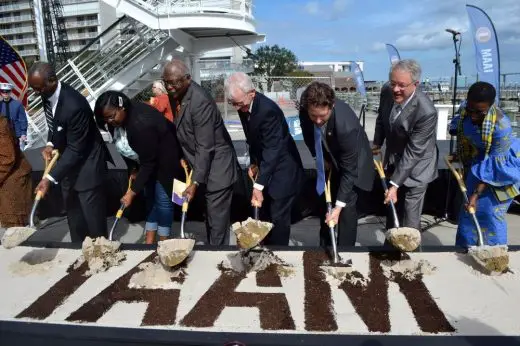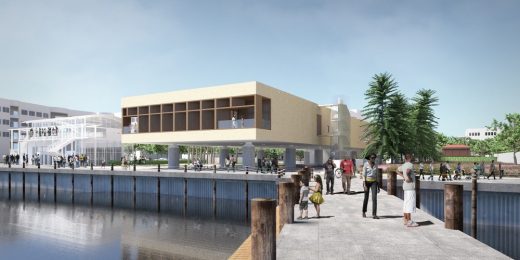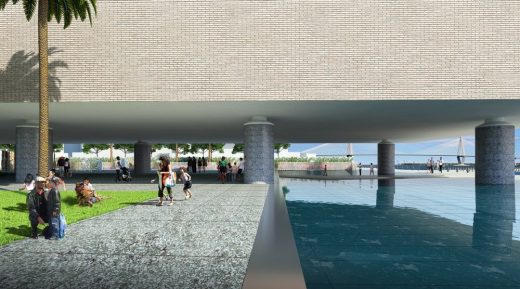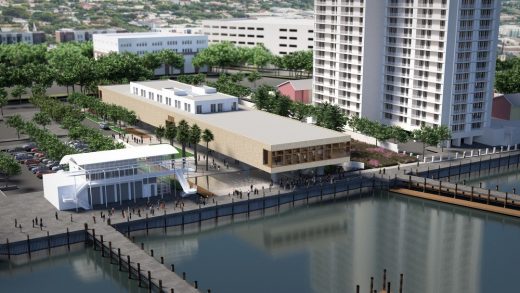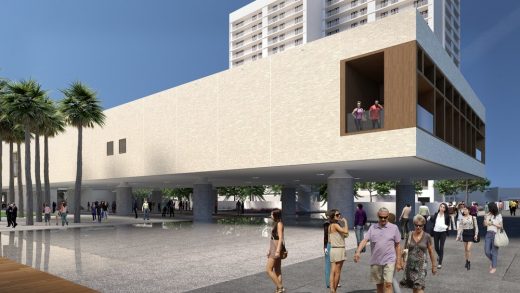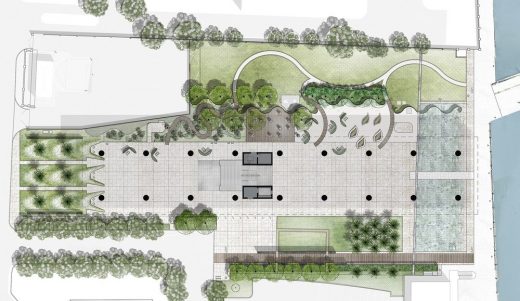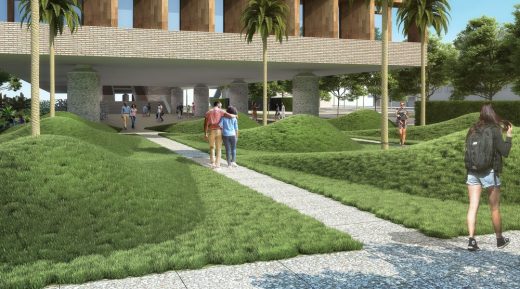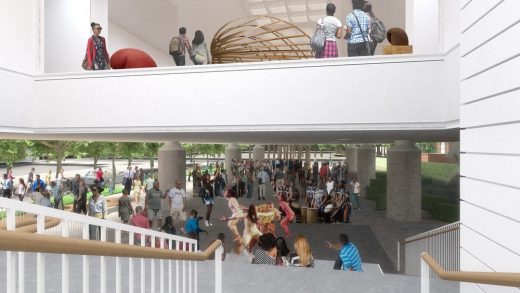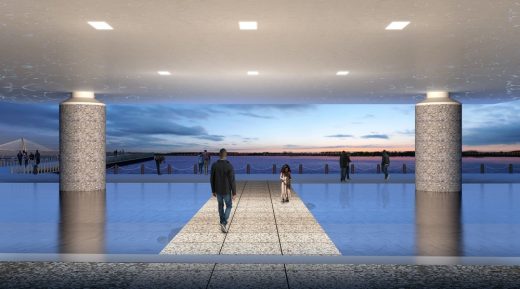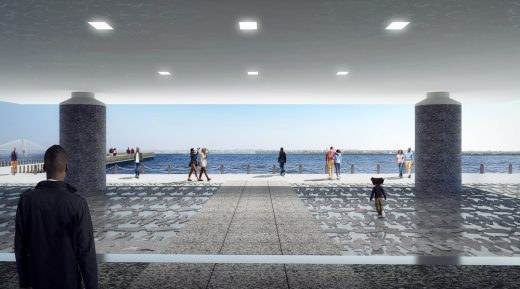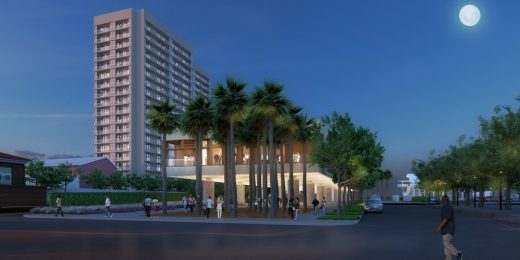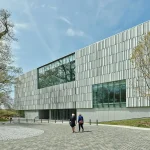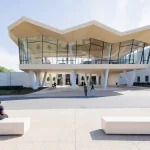International African American Museum, Charleston Visitors Centre, SC Building, Architecture Images
International African American Museum in Charleston
Large Building Development in South Carolina, USA design by Pei Cobb Freed & Partners, Architects
Updated 23 June 2023 + Jan 21, 2020
International African American Museum
Architects: Pei Cobb Freed & Partners
Location: Charleston, South Carolina, USA
Photos © Mike Habat
The long-awaited International African American Museum (IAAM), more than two decades in the making, will celebrate its grand opening on June 24, 2023 at the waterfront site that served as the port of arrival for nearly half of all enslaved Africans brought to North America in the eighteenth and nineteenth centuries. The museum is dedicated to telling their stories, and to celebrating the contributions of their descendants.
IAAM is housed in a building designed by Pei Cobb Freed & Partners and Moody Nolan, with landscape design by Hood Design Studio and exhibition design by Ralph Appelbaum Associates. The firms worked closely together to create a work of architecture and an environment that honors the site’s history, while supporting an array of exhibitions, events, and educational resources.
The building form reflects the guiding principle articulated by its lead designer, the late Henry N. Cobb, for whom the location was paramount. “As the place at which many thousands of Africans from diverse cultures first set foot in North America,” Cobb wrote of the site, “Gadsden’s Wharf is not just the right place to tell this story; it is hallowed ground. Hence the special design challenge of the International African American Museum: to build on this site without occupying it.”
In service to this aim and the mission of IAAM, the newly completed structure grants primacy to the seascape it fronts, the landscape that frames it, and the memorial it shelters. In collaboration with executive architect Moody Nolan, Pei Cobb Freed & Partners designed the 426-foot-long, 84-foot-wide, single-story volume to hover thirteen feet above the ground, supported by eighteen cylindrical pillars arranged in two rows. A deliberately contextual response to the highly charged historical site, the long side walls are clad in pale yellow brick, while the glazed end walls are framed by African sapele louvers, directing views to the Atlantic on the east, and downtown Charleston on the west. The supporting columns are clad in traditional oyster-shell tabby, also used as paving in portions of the landscape.
With the exception of two service cores framing a central skylit stairway, the entire ground plane beneath the building remains open, representing the heart of the site’s collective memory. On the east side of this open space, oriented to the harbor and ocean beyond, a shallow reflecting pool signifies the edge of Gadsden’s Wharf as it was at the beginning of the nineteenth century, the peak of the slave trade. On the west side, oriented to Concord Street and Gadsdenborough Park, granite paving demarcates a sheltered gathering place for group activities and performances.
“The International African American Museum is more than a mark of architecture, it’s an extraordinary milestone,” says Curt Moody, founder of Moody Nolan. “Having worked for the last fifteen years to dream this into being, we are intimately aware of the cultural significance it has for American history. Without this building, this sacred site would have remained unknown, and the stories of our ancestors untold. It’s an honor and a privilege to work on a project that has this kind of tenacity, and we recognize that the opportunity to leave an impression on people around the world, for generations to come, is a rare gift.”
Embracing the entire site, the African Ancestors Memorial Garden, designed by Hood Design Studio, stands as a beacon of remembrance and reflection. The garden acknowledges the history of Gadsden’s Wharf, drawing inspiration from the low-country landscape and the wide-reaching heritage of the African diaspora.
A blend of ecology, craft, and art creates an environment fostering contemplation and dialogue. A series of sub-gardens, nestled within the overarching landscape, celebrates the artistry, craftsmanship, and labor that African Americans have contributed throughout history. A centerpiece of the garden is an expansive water feature evoking the Atlantic Passage, a tribute to the perilous journeys endured by enslaved Africans. Inspired by the eighteenth-century Brooks map, which shows enslaved individuals packed into the lower decks of a slave ship, the water feature has a dynamic quality, as it gently ebbs and flows, alternately revealing figures beneath the surface and cloaking them with reflections of the sky.
Bordering the water feature is a shimmering stainless steel band that traces the historic line of Gadsden’s Wharf. This band serves not only as a reflective border, but also as a ledger of memory engraved with the names of ports that marked the beginning and end of countless journeys during the transatlantic slave trade.
For creative director Walter Hood, “The Ancestors Garden—the site where many enslaved Africans first touched North America—is a series of spaces and exhibits that establish this site as an authentic place of arrival, a place for becoming. The ground beneath the museum is the artifact of the site. As a rich tapestry of water, tabby, grasses, wood, and stone, the hallowed ground and landscape spaces offer contemplation, celebration, and fraught memories.”
The design team envisioned the entry sequence as both a destination and transitional space between the landscape and exhibition. Visitors are drawn into the museum through a luminous atrium at the center of the building, moving from shadow to light as they ascend the monumental stair. On the upper level, large windows at both ends offer unobstructed views of the port to the east and the city to the west. Exhibit designer Ralph Appelbaum Associates (RAA) planned the narrative flow of the installations around the architecture, organizing the east side thematically, with an introductory corridor and orientation theater leading to multimedia displays of South Carolina and Gullah Geechee culture, African roots, and the Atlantic world. The west side features a chronological, interactive gallery called American Journeys, juxtaposed with media related to the legacies of slavery and current movements around racial equality and social justice. The Center for Family History, at the west end of the building, provides a major resource for the study and advancement of African American genealogy, where genealogists and the public can research the museum’s unique collection of primary sources, documents, and texts.
“Museums have become community resources, talking about big issues, not just places that safeguard things of the past,” notes Aki Carpenter, RAA Vice President and Chief Creative Officer. “IAAM is a space to address important issues we are talking about in our country, in the place where these things happened.”
Twenty years in the planning, the International African American Museum is now under construction
On the waterfront site that was the port of arrival for nearly half of all enslaved Africans brought to North America in the eighteenth and nineteenth centuries, a long-anticipated museum dedicated to telling their stories and celebrating the contributions of their descendants has at last broken ground.
Proposed in 2000 by Charleston’s longtime mayor Joseph P. Riley Jr., the International African American Museum (IAAM), designed by New York–based architectural firm Pei Cobb Freed & Partners, is now under way. Moody Nolan, the largest African-American-owned design firm in the United States, is executive architect.
The museum is rising on what was once Gadsden’s Wharf, built by slave labor in 1767 and the most important disembarkation point for enslaved Africans brought to the United States. It is estimated that 80 percent of African Americans alive today can trace their ancestry to the wharf, and the significance of the site informs the design throughout.
“As the place where thousands of Africans from diverse cultures first set foot in North America, Gadsden’s Wharf is not just the right place to tell this story; it is hallowed ground,” said the lead designer for the project, Henry N. Cobb. “The special design challenge of the museum was to build on this site without occupying it.”
The response is a work of architecture that will serve and celebrate IAAM’s mission by granting primacy to the seascape it fronts, the landscape that frames it, and the memorial it shelters. The museum will be housed in a 426-foot-long, 84-foot-wide single-story volume hovering thirteen feet above the ground and supported on eighteen cylindrical pillars arranged in two rows.
Reflecting a careful contextual response to the highly charged historical site, the long side walls will be clad in pale yellow brick, while the glazed end walls will be framed by African sapele louvers, directing views to the Atlantic on the east and downtown Charleston on the west. The supporting columns will be clad in traditional oyster-shell tabby, also used as paving in portions of the landscape.
With the exception of two service cores framing a central skylit stairway, the entire ground plane beneath the building will remain open, representing the heart of the site’s collective memory. On the east side of this open space, oriented to the harbor and ocean beyond, a shallow reflecting pool will signify the edge of Gadsden’s Wharf as it was at the beginning of the nineteenth century, at the peak of the slave trade. On the west side, oriented to Concord Street and Gadsdenborough Park, granite paving will demarcate a sheltered gathering place for group activities and performances.
The African Ancestors Memorial Garden, designed by landscape architect Walter Hood, embraces the entire site, deploying elements of low-country landscape as it celebrates the arts, the crafts, and the labors of African Americans. The garden is bounded on one side by a shallow pool—a metaphor for the Atlantic—whose sharply defined western edge marks the original seawall of Gadsden’s Wharf, while its soft eastern boundary evokes the limitless ocean beyond.
In addition to historical and cultural exhibits, designed by Ralph Appelbaum Associates, the 41,800-square-foot building will house a family history center for ancestral research and a social justice action lab. IAAM is scheduled for completion in late 2021.
About Pei Cobb Freed & Partners
With projects in progress in North and South America, Europe, the Middle East, Asia, and Australia, New York–based Pei Cobb Freed & Partners is a leader in architectural design and sustainability. Across more than six decades of exceptionally diverse practice, the firm has completed building and planning projects in more than 100 cities around the world. Consistently recognized for excellence in design, the firm’s projects have received more than 300 awards, including 25 AIA Institute Honor Awards and three AIA Twenty-five year Awards. For more information, visit pcf-p.com.
About IAAM
The mission of the International African American Museum is to illuminate the story of the enslaved Africans who were taken from West Africa, entered North America through Charleston, South Carolina, endured hardship and cruelty, and along with their descendants contributed so significantly to the United States of America.
The museum and its memorial garden will honor the site where they arrived and thousands died, share important narratives that have been overlooked by historians, and promote compassion and empathy across all races and ethnicities. Programming will include a center for genealogical research, a comprehensive education program for life-long learning, and changing exhibitions and special events throughout the year. For more information, visit IAAM
International African American Museum, Charleston – Building Information
Design Team
Architecture; exterior envelope; interior design of public spaces: Pei Cobb Freed & Partners
Executive Architect: Moody Nolan, Columbus, Ohio
Landscape Architecture: Hood Design Studio, Oakland, California
Interpretive Design: Ralph Appelbaum Associates, New York
Structural Engineering: Guy Nordenson and Associates, New York
M/E/P Engineering: Arup, USA, Washington, DC
Site
On the site of the former Gadsden’s Wharf on the Cooper River, overlooking Charleston Harbor
Area
41,800 sf gross floor area
Major Components
exhibit area, administrative offices, museum shop, café, Center for Family History, Social Justice Action Lab, Memorial Garden, Tide Tribute
Images: Pei Cobb Freed & Partners
International African American Museum in Charleston, South Carolina images / information received 210120 from v2com newswire
Location: Charleston, South Carolina, USA
Architecture in USA
South Carolina Architecture
Darla Moore School of Business, University of South Carolina
Design: Rafael Viñoly Architects
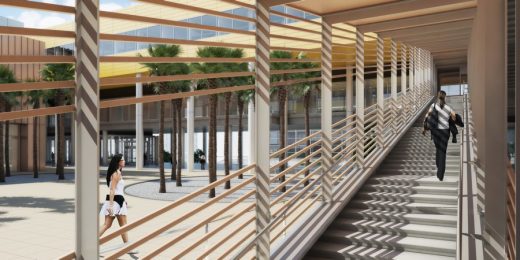
pictures © Rafael Viñoly Architects
University of South Carolina Building
North Carolina Architecture
Hunt Library, Raleigh
Design: Snøhetta
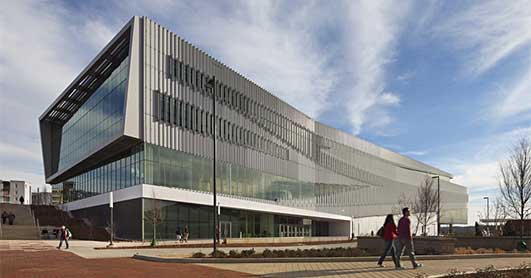
photo : Mark Herboth
Walnut Cove Residence , Arden
Design: Samsel Architects
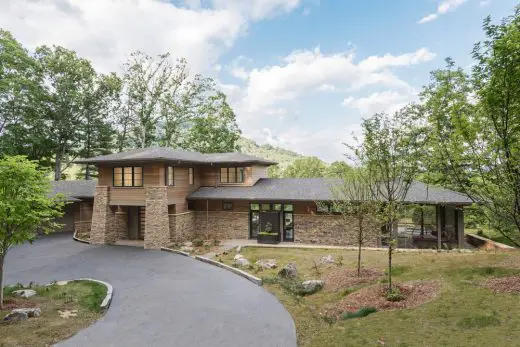
photo : Todd Crawford
New Residence in Arden
Contemporary Art Museum, Raleigh
Design: Brooks + Scarpa
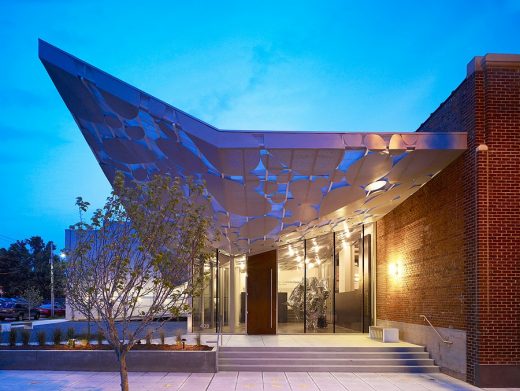
picture from architects
Contemporary Art Museum Raleigh
AIA North Carolina Architecture Competition
New US Buildings
Thomas Phifer and Partners
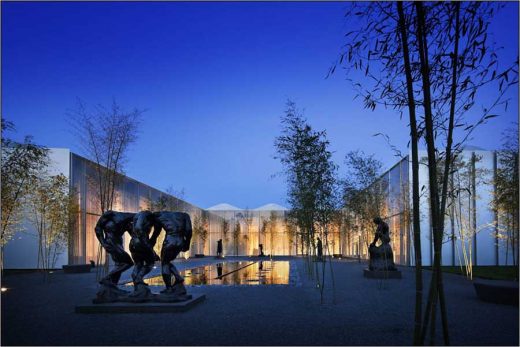
picture © Scott Frances. Courtesy NCMA
North Carolina Museum of Art Building
Francis Marion University – Multi-Use Performing Arts Center, South Carolina
Holzman Moss Architecture
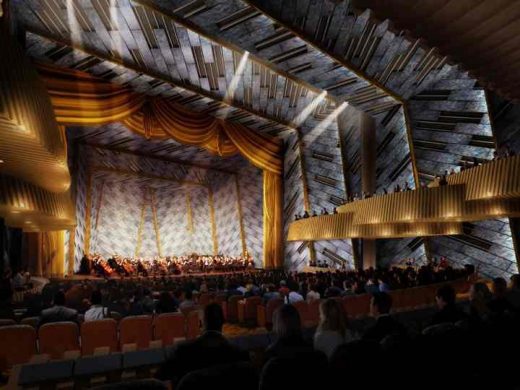
rendering by Studio AMD, courtesy of Holzman Moss Architecture
Francis Marion University South Carolina
Tryon Bridge Beacons, Charlotte
Friedrich St.Florian Architects
Comments / photos for the International African American Museum in Charleston, South Carolina page welcome

